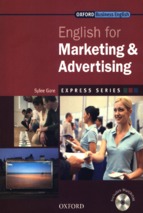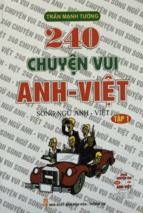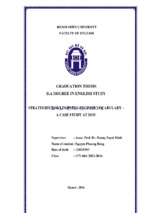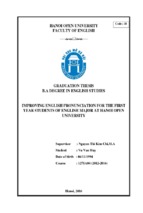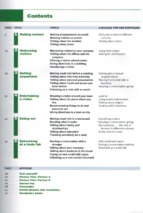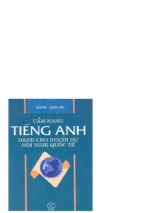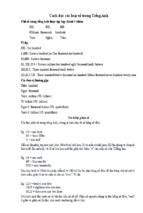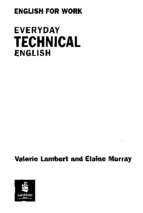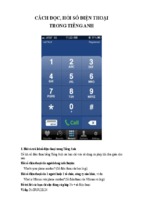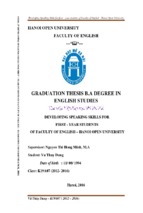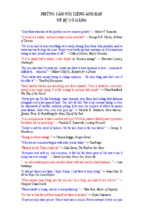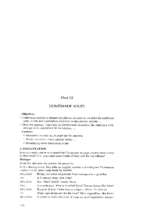DICTIONARY OF
CONTEMPORARY
SLANG
DICTIONARY OF
CONTEMPORARY
SLANG
THIRD EDITION
TONY THORNE
A & C Black 앫 London
www.acblack.com
First published in Great Britain 1990
Paperback published 1991
Second edition published 1997
Paperback published 1999
Third edition published 2005
This paperback edition published 2007
A & C Black Publishers Ltd
38 Soho Square, London W1D 3HB
© Tony Thorne 1990, 1997, 2005, 2007
All rights reserved. No part of this publication may be reproduced, stored in a
retrieval system, or transmitted in any form or by any means without the
permission of the publishers.
A CIP record for this book is available from the British Library
ISBN-10 0 7136 7529 2
ISBN-13 978 0 7136 7592 0
eISBN-13: 978-1-4081-0220-6
ISBN-10 0 7136 7529 2
ISBN-13 978 0 7136 7592 0
Text production and proofreading
Heather Bateman, Emma Harris, Katy McAdam, Rebecca McKee
This book is produced using paper that is made from wood grown in managed,
sustainable forests. It is natural, renewable and recyclable. The logging and
manufacturing processes conform to the environmental regulations of the country
of origin.
Text typeset by A & C Black Publishers
Printed in Spain by GraphyCems
INTRODUCTION: SLANG IN THE 21ST CENTURY
Slang and Society
Slang derives much of its power from the fact that it is clandestine,
forbidden or generally disapproved of. So what happens once it is
accepted, even in some cases embraced and promoted by
‘mainstream’ society? Not long ago the Oxford English Dictionary
characterised slang as ‘low and disreputable’; in the late 1970s the
pioneering sociolinguist Michael Halliday used the phrase
‘anti-language’ in his study of the speech of criminals and
marginals. For him, theirs was an interestingly ‘pathological’ form
of language. The first description now sounds quaintly outmoded,
while the second could be applied to street gangs – today’s posses,
massives or sets – and their secret codes. Both, however, involve
value judgements which are essentially social and not linguistic.
Attitudes to the use of language have changed profoundly over the
last three decades, and the perceived boundaries between
‘standard’ and ‘unorthodox’ are becoming increasingly ‘fuzzy’.
Today, tabloid newspapers in the UK such as the Sun, the Star
and the Sport regularly use slang in headlines and articles, while
the quality press use slang sparingly – usually for special effect –
but the assumption remains that readers have a working knowledge
of common slang terms.
There has been surprisingly little criticism of the use of slang (as
opposed to the ‘swear-words’ and supposed grammatical errors
which constantly irritate British readers and listeners). In the last
five years I have only come across one instance, reported in local
and national newspapers, of a south London secondary school head
publicly warning pupils of the dangers of using slang in their
conversation. The school in question has pupils from many ethnic
and linguistic groups – which may give a clue as to why young
people might opt for slang as a medium of communication and not
just an embellishment. Perhaps they have come to see slang as
their own common language, in which they are fluent, and which
may therefore take precedence over the other varieties in their
repertoires (Hindi, Gujarati, Punjabi, Creole, ‘Cockney’, ‘textbook
English’ etc.). The use of slang forms part of what linguists call
code-switching or style-shifting – the mixing of and moving between
different languages, dialects or codes. This might be done for ease
Introduction
of communication, for clarification, to show solidarity or – a reason
sometimes overlooked by analysts – just for fun.
In the US, on the other hand, slang and so-called ‘vernacular’
use is still highly controversial. This stems in part from the contest
between conservatism and ‘multiculturalism’ or ‘liberalism’, which
in the late 1990s focused on the stalled attempt to establish
so-called ‘ebonics’, or black spoken English, as a linguistic variety
with official status. Recently, some North American academic
linguists and their students have joined with parents, teachers and
adult professionals to lament the corrupting and destabilising effect
of slang on young peoples’ ability to manage in formal settings such
as examinations or job interviews. Their fears can’t simply be
dismissed, but they seem to be based on a very rigid notion of
language’s potential. The key to effective communication is what
language teachers term ‘appropriacy’; knowing what kind of English
to use in a particular situation, rather than clinging to rigid ideas of
what is universally right and proper.
In my experience, most slang users are not inarticulate dupes
but quite the opposite: they are very adept at playing with
appropriacy, skilfully manipulating ironically formal, mocktechnical and standard styles of speech as well as slang. If
prompted they can often provide insights into their own language
quite as impressive as those hazarded by professional linguists or
sociologists. For this reason, for the first time in the Dictionary of
Contemporary Slang I have sometimes included, in their own words,
users’ definitions of terms and comments on their usage as well as
the direct quotations – ‘citations’ – contributed by them and
featured in previous editions.
Slang versus ‘Proper English’
Slang is language deliberately selected for its striking informality
and is consciously used in preference to ‘proper’ speech (or, more
rarely, writing). It usually originates in small social groups. For
these groups, it is a private code that embodies their particular
values and behaviour and reinforces their exclusivity. Slang
expressions may escape the originating group and become more
widely used, and although slang draws much of its effect from its
novelty, some terms (booze, punk, cool) may stay in the language
for many years.
Introduction
This may seem a longwinded definition of a language variety that
most people think they recognise, but the neater descriptions to be
found in collections of quotations, such as G.K. Chesterton’s ‘all
slang is metaphor’ (much is but not all) or Ambrose Bierce’s ironic
‘the grunt of the human hog…’ don’t really succeed in nailing the
phenomenon. (Definitions by academic linguists, apart from
Halliday’s, are entirely absent.) Slang has also been referred to as
‘the poetry of everyday life’ or ‘of the common man’. Although it
does make use of poetry’s rhetorical tricks (and more devices
besides), poetry is allusive while slang is anything but, depending
for its power on either complete, shared understanding (by insiders)
or complete bafflement (on the part of outsiders).
Ask users of slang for a definition and they might come up with:
‘jargon, used playfully to prevent outsiders from intercepting the
actual meaning’; ‘the ever-evolving bastardisation of the written
and spoken language as a result of social and cultural idolization
[sic] of uneducated, unintelligable [sic] celebrities’ and ‘cool
words, words that match the style’ (all of these are from the Urban
Dictionary website). One teenager I interviewed defined it simply as
‘our language’.
More specifically, slang terms have certain recognisable
functions. Firstly, like any new coinage, a slang word may fill a gap
in the existing lexicon. For example, there is no single verb in
standard English that defines the cancelling of a romantic tryst or
social arrangement, so British adolescents have adopted the words
ding or dingo. To jump and hug someone from behind is rendered
much more succinct in US campus speech as glomp.
Secondly, a slang expression may be substituted for an existing
term – what linguists refer to as ‘relexicalisation’ – smams or chebs
for breasts, blamming for exciting and chuffie for chewing gum are
recent British examples. More than one motive may be in play here:
renaming something makes it yours, and makes it funnier
(Ethiopia!) or ruder (cunted). Using cultural allusions (Mr Byrite)
demonstrates worldliness; rhyming slang (Claire Rayners) is not
simply a useful mechanism, or a disguise, but may conceivably
show solidarity with an older tradition.
Slang users tend to invent many more synonyms or near-synonyms
than might be thought strictly necessary: for example, criminals may
have a dozen different nicknames (gat, cronz, iron, chrome) for their
guns, or for informers (canary, grass, snout, stoolie); drinkers can
Introduction
choose from hundreds of competing descriptions of a state of
intoxication (hammered, hamstered, langered, mullered). This
phenomenon is technically described as ‘overlexicalisation’, and it
happens because the words in question have an emblematic force
over and above their primary meanings. Macho would-be seducers
or studs require a range of usually disparaging or patronising terms
for their sexual conquests and more than one pet-name for their
manly attributes; drug users pride themselves on being able to
distinguish the nuances in different states of euphoria or
intoxication; cliques and gangs enjoy inventing a host of pejorative
nicknames for dissing those they see as outsiders. The most
significant groupings of terms in the new dictionary continue to be
in the same ‘semantic fields’ as before: the categories of
drunkenness and druggedness, of terms of approval and
enthusiasm, of insults and pejorative nicknames and of expressions
relating to sex and partnership.
The New Dictionary
Thousands of new expressions have entered the language since the
turn of the century and dozens, perhaps hundreds, more are added
to the common vocabulary every week. The lexicographer has to try
to identify novelties as they arise and to track the changes in the
way existing words are being used. This dictionary has been
regularly updated since its first publication in 1990 – but this, the
first edition in the new millennium, has seen a wholesale revision of
all entries and the addition of about 2,000 new terms.
One of the most painful procedures for the compiler is to decide
which expressions must be deleted in order to make room for new
material. Contrary to popular belief, very few slang items fall
completely out of use. What happens is that certain words – sorted
is an example – are assimilated into everyday colloquial usage,
while others are abandoned by their original users as being
outmoded or no longer exclusive enough, but are adopted by
‘outsiders’. For example, a modish term of appreciation like phat,
only known to a hip minority in the early 1990s, may now be heard
in the primary school playground. Some words – the adjective
groovy is one such – are recycled. Trendy in the 1960s, then
sounding hopelessly outdated by the late 1970s, it was revived
ironically in the later 1980s, before finally being used by some
members of the new generation in more or less its original sense.
Introduction
(Groovy is an interesting example in that, like lucre/luka and
ducats/duckets, it seems to have been picked up by some
youngsters who were unaware of its origins or ‘correct’ form, hearing
it as crovey.) Seemingly archaic words may be rediscovered, as in
the case of duffer, although there is always the chance that this is a
coincidental coinage.
After much hesitation, therefore, the deletions were made on a
fairly subjective basis. Genuine archaisms like love-in-a-punt (a
comic description until the 1950s of weak beer: the joke is that it’s
‘fucking near water’), or the lump, designating a long-obsolete
system of employment, were doomed, however picturesque or
evocative. Terms which were always in very limited circulation, such
as puggled (meaning tipsy or drunk) or pipe, in the sense of stare at,
would have to go, as did others that were both dated and obvious,
like the nicknames jelly (for the explosive gelignite) or milko (a
milkman). Some, like smidgin or channel-surfing, are deemed to
have become common colloquialisms.
The new expressions have all been collected since 2000 from a
cross-section of the slang-using communities in what has come to
be known as the anglosphere.
In a work of this size it isn’t possible to include the entire
vocabulary of every local subculture, so when a range of terms has
been uncovered, we have included only those which have intrinsic
interest (i.e. they are witty, inventive, particularly unusual
linguistically – Listerine is all three), seem especially
characteristic of a community (chuddies, filmi) or appear likely to
cross over into wider use (munter, hottie). There are more British
terms (although ‘British’ is nowadays shorthand for a multilingual
mix) than North American, Australasian etc. since the bulk of the
collecting was carried out in the UK. None of these criteria are in
any way ‘scientific’, so the lexicographer is still the final judge.
One thing that has not changed since the first publication of
this dictionary is the relative lack of interest shown by UK
academics in this type of language, relative to their counterparts in
the US, Europe and elsewhere. On the other hand, students in
higher education and schoolchildren have increasingly chosen to
study, analyse and research a variety of speech in which they have
a special stake, while, judging by reference book sales and letters
to newspapers and magazines (and to myself), the general public is
Introduction
hungry for any reliable information about new language and
language change.
Collecting the Data
I have above all been inspired by the alternative Dr Johnson,
Captain Francis Grose, who compiled the 1785 Classical Dictionary
of the Vulgar Tongue. I have tried to emulate him, not so much in
his fondness for huge meals and strong drink, but in his avoidance
of print archives in favour of going out into the streets, the taverns
and the barracks recording what people are actually saying.
The effect of Captain Grose’s 18th-century slang dictionary was
not to make respectable, but at least to treat with some respect,
even to celebrate, the language of the dissolute and the
dispossessed. Likewise, this dictionary applies lexicographic
techniques to the speech of individuals and groups who may have
little prestige in society as a whole, but who in their own
environments are the impresarios of speech styles, the guardians
and reinventors of subcultural mystique.
Halliday commented that of all the socialising environments
(family, school, workplace) in which individuals develop their
identities, the peer group is the most difficult for the researcher to
penetrate. However, it is from the peer group, whether consisting of
schoolkids, skateboarders or soldiers, that slang typically emerges.
It is tricky for an ageing baby boomer to infiltrate these groups, to
join a streetgang or even to go clubbing without attracting
attention, but it’s absolutely essential for the seeker of slang to get
access to authentic samples of language – particularly spoken
language – in their authentic settings, since much slang is never
written down (calling into question the value of reference works
based solely on printed examples) or only recorded in writing long
after its first appearance.
When circumstances allow, listening in on conversations is an
ideal approach, but as electronic eavesdropping is now forbidden
except where consent has been given in advance, most of the
examples collected here have been recorded and reported by users
or their friends, gathered by interviews or by long-term recording of
conversations in which participants gradually come to ignore the
presence of the microphone. However expert the compiler, there is
an obvious risk of being fed false information, so to qualify for
inclusion terms must be attested by two separate sources.
Introduction
Cyberslang?
The Internet has transformed the way we manipulate our systems of
signs and the relationships between producers and consumers of
information. Its effect on slang has two aspects. Firstly, online
communication has generated its own vocabulary of technical
terminology, essentially jargon (spam, blogging, phishing) and
informal, abbreviated or humorous terms (addy, noob, barking
moonbat etc.) which qualify as slang. The amount of new
cyberslang is fairly small, but the Internet has also allowed the
collecting, classifying and promoting of slang from other sources in
the form of so-called dictionaries, glossaries and articles written by
individual enthusiasts. Even more interesting are the online
lexicons compiled wholly by contributors, who post new expressions
and provide their own explanations and examples.
Many of the websites in which slang is collected and discussed
are truly democratic and genuinely user-driven, but almost none of
them are authoritative, in the sense that they can be trusted to have
studied the words they record, to produce accurate or convincing
etymologies rather than supposition, or to comment from a basis of
familiarity with other sources. Two that I particularly recommend,
though, are the Urban Dictionary (www.urbandictionary.com) and
the Playground Dictionary (www.odps.org). It is a point of honour
among lexicographers that they don’t poach words from rival
collections, but I have used these online glossaries to verify the
authenticity and sometimes the meanings of some of the more
obscure words that I have come across. One hardcopy reference
work that can also be recommended is Viz magazine’s
Profanisaurus, a regularly updated glossary of sexual and
scatological expressions and insults, donated by readers. Despite
its comic intent the material is a valuable trove of contemporary folk
obsessions and I have tried not to duplicate it in these pages.
It is communications technology in general and not only the
Internet that is enabling slang, especially the most pervasive
English-based slang, to globalise. Late one night in a hotel room in
Cologne, I watched a cable TV station from Berlin broadcasting a
video diary in which teenagers improvised conversations in a mix of
German, English and snatches of Spanish and Turkish. The
soundtrack simultaneously ran sampled sequences of rock, rap, rai
etc. while subtitles provided an ironic metacommentary also
Introduction
blending a variety of languages. This was not an avant-garde artistic
gesture as far as I could tell, but a snapshot of a genuine ‘sociolect’;
the creative and playful code in which this loose association of
friends chooses to express itself.
Another technical development – text messaging – has triggered
changes in the culture of communication, especially among young
people, and brought with it, like telegrams, CB-radio or Internet
chatrooms, a new form of abbreviated code. It has excited some
academic linguists but it hasn’t, however, contributed anything
meaningful to the evolution of slang as such: no new words or
radical shifts in syntax have been generated yet.
Blingage and Chavdom
Two well-known examples from early in the ‘noughties’ decade,
already history by the time this book appears, illustrate the
linguistic development and cultural resonance of slang. The first is
one of the words that the south London school head singled out for
disapproval. Bling was coined as far as anyone knows – although
music lyricists and journalists often claim slang words as their own
creations, the real originators often remain anonymous – either in
imitation of the sound of clanking jewellery, or, less probably, to
evoke its glittering appearance. The jewellery in question was part
of the ostentatious display associated with black aficionados of US
rap music and hip hop culture, and the word, sometimes
reduplicated as bling-bling, came to epitomise an attitude of
conspicuous and shameless consumption, aggressive flaunting of
wealth and ‘street’ status. Young speakers in the UK adopted the
expression around 2002, then the noun form began to be used
adjectivally (as in ‘very bling’), and by 2005, middle-aged TV
presenters and middle-class parents were experimenting with the
word. In slang usage, meanwhile, by analogy with other American
terms, (fundage, grindage), a new noun, blingage, appeared in
2003.
Although black slang is the dominant influence in many youth
subcultures, it is not one dialect, but rather a range of terms from a
continuum incorporating US, Caribbean, urban British and South
African speech. As well as words like bling and its derivations,
which have to some extent crossed over, there are a host of other
‘black’ words including skank, hench, tonk, mashup and butters
Introduction
which have become common currency on the street. It’s a sign of
cultural importance if a trend is successfully parodied, and UK
comedian Sasha Baron Cohen’s fictional TV character Ali G very
effectively mocked the language (not only the vocabulary but the
assumed intonation) and appearance of the wiggas and Asians who
resolutely imitated black styles from the late 1990s.
The second well-known example of media fascination with slang
and cultural change is not inspired by black speech, but ultimately
by the language of another oppressed minority with
disproportionate subcultural capital, the Roma. In 2004 the British
media became aware of a website, www.chavscum.co.uk, which
was celebrating a new social category. The nickname chav denoted
a person with the following defining attributes (according to
researcher Sarah Bromley): he or she is youngish, favours
sportswear, loiters in groups in town centres, may be involved in
petty crime, if female wears prominent cheap jewellery (known
incidentally as Argos bling or bingo bling) and has scraped-back
hair (the effect has been dubbed a Croydon facelift), if male has a
shaven head or crew cut and probably wears a baseball cap. The
categorisation is complex in that it describes not only a ‘look’, or a
so-called subculture, but in some ways resembles an old-fashioned
class distinction. The class connotations are new, though, as, often
pejorative, chav can also be used with mock-affection or even
admiration by sophisticates who have extended the scope of the
concept to take in reality TV celebrities and pop stars and claimed
that this vulgar, feckless, assertively uncultured group are, if not the
‘new ruling class’ (the extreme view), then at least an unstoppable
social force.
With chav, once again an ancient slang term mutates or is
reinvented (punk is another example of this), acquires powerful if
temporary social significance, and prompts excited linguistic
speculation. A completely spurious folk etymology was found – the
word was said by some, including some police officers, to be an
acronym; ‘council-housed and violent’. Chav is actually one version
of an old Romany term meaning child and/or friend, a word
previously more often recorded (and included in earlier editions of
this dictionary) in the variant forms charvie or charver. The people
referred to were in fact identified by slang users in the 1990s and
defined by a wide range of regional nicknames, including spide,
steek, scally, townie, pikey, pov, schemie. In the evolutionary
Introduction
struggle for dominance, media adoption helped chav to triumph, to
spawn related witticisms like chaviot (a chav-chariot or cheap,
over-embellished car), and become by general agreement of British
journalists and lexicographers the vogue word of 2004 and 2005.
Latest developments
In the last few months there have been a couple of significant
eruptions of slang into the UK’s ‘national conversation’, and one
important subcultural phenomenon has been confirmed. Radio DJ
Chris Moyles caused a furore when he referred on air to a mobile
phone ringtone as gay, using the word, like many teenagers, as a
generalised term of derision, a synonym for lame. Listeners
complained about this latest appropriation of a word previously
appropriated by homosexuals, while some gays actually defended
the usage as non-homophobic, harmless and frivolous.
Microphones left on at the Russian summit picked up the US
President, George W Bush, greeting the UK Prime Minister in
frat-boy or hip-hop style with ‘Yo, Blair!’. The banter that followed in
which both men used boyish colloquialisms, Bush easily, Blair
self-consciously, seemed to confirm an unequal relationship
between them. On the street meanwhile, and in the playground and
youth-oriented media, the black North American verbal ritual of
signifyin’ or soundin’, also known as the dozens, playing the dirty
dozens, capping or bad-talk, whereby males compete to diss one
another’s mothers with elaborate slanders, had crossed over to
feature in UK speech. The tradition, which some think originates
from slave auctions where the infirm were sold by the dozen, was
designed to test both speaking skills and restraint in the face of
provocation, but now functions as a humorous exchange, also
practised by females and non-blacks.
Back to the future
So to return to that question: what becomes of slang? Firstly, the
general ‘flattening out’ of a hierarchical society and the relaxation
of linguistic prejudices mean that slang may come to be seen not as
something inherently substandard, but as an option among many
available linguistic styles. At the same time there must always be a
set of words and phrases which is beyond the reach of most
speakers, that is always ‘deviant’, ‘transgressive’ and opaque. This
slang must renew itself, not just in implied contrast with ‘standard’
Introduction
language, but with earlier versions of itself. So new slang words will
continue to sprout, to metamorphose, to wither and disappear or
else to spread and fertilise the common ground of language. This
process may now be more visible and familiar, the crossover
phenomenon may happen much faster (given the complicity of the
media), and the shock value of the terms themselves may be
lessened (the invention and use of slang does risk becoming locked
into familiarity and cliché, like the tired gestures of rock, rap,
conceptual art and fashion), but it is very unlikely ever to stop.
Thanks and Acknowledgements
Thanks again to all contributors named in previous editions,
especially the late Iona Opie and the late Paul Beale, and to all
those who have contributed new material including Anna Merritt,
Jean Saville, Danielle Dodoo, Kate Merry, Shelley Kingston, William
Wentworth-Sheilds, Rebecca Gibbs, Zimarina Sarwar, Mark Smale,
Benjamin Linton-Willoughby, Darren Elliott, Hattie Webster, Steve
O’Donoghue, Tiffany Zwicker, Charlotte Pheazy, Sammy Wilson,
Charlotte Mulley, Vicky Bhogal, Sandip Sarai, David Castell,
Mathew Casey, Ross Raisin, Beatrix Agee, Anna Cook, Francis
Woolf, David Mallows, Rod Murdison, Louise Marshall, Soo Rose,
Anna Lisa Koppelman, Rebecca Koppelman, Christine Sarkis,
Andrew Melbourne, Serena Gilbert, Nikki Follis, Victoria Milne,
Louise Gage, Nicola Wardlow, Dana Stevens, Laurie Armstrong,
Mark Jones, Anthony Fogg, Jan Eisby, Caroline Dunn, Chryselle
Pathmanathan, David Bryan, Lisa Michelle Jenkins, Halima Jayda
Mian, Michelle Chamberlain, Rabab El Basset, Kenneth McClean
Brown, Sarah Bromley, Vivian Goodman, James Womack, Simon
Donald, Michael Rosen, Professor Richard Dawkins, Charlie Higson
and Claire Rayner, Simon Elmes, Keith Ricketts, Colin Babb and
John Goodman.
Also to colleagues at King’s College London, particularly
Professors Barry Ife, Linda Newson, Michael Knibb, and Ann
Thompson and Dr David Ricks who have supported my research and
the King’s Archive of Slang and New Language. I have a very special
debt of gratitude to Professor Connie C. Eble of the University of
North Carolina at Chapel Hill, who generously made available the
fruits of her recent research into US campus slang (complementing
a tally begun in the 1970s, and her still unrivalled 1996
publication, Slang and Sociability).
Introduction
The Dictionary of Contemporary Slang is an ongoing project; a
survey which by virtue of its subject must be constantly updated to
keep track of new coinages and changes in the status of existing
terms. The idea of a reference work as something sternly
authoritative and unreachably remote from its users is outmoded;
thanks to electronic communications a dictionary can now interact
with its readers. This was the first interactive slang dictionary and
the compiler and the publishers would be very grateful for any
contributions or suggestions from readers who can either mail
material to: Dictionaries Department, A & C Black Publishers Ltd,
38 Soho Square, London W1D 3HB or communicate with the
author via e-mail at
[email protected]. (The introduction to the
previous edition and related articles can be consulted at
www.kcl.ac.uk/depsta/elc/slang.html.) Information about new slang
terms should ideally include, as well as the meaning, details of
when and where the word or phrase was used and a direct quotation
if possible, together with the name of the contributor, who will be
acknowledged in the next edition.
Tony Thorne
London, January 2007
HOW TO USE THIS BOOK
A typical entry in the dictionary will contain the components
described below (with the typefaces explained in brackets):
The HEADWORDS are entered in alphabetical order (in primary bold
type), together with any variant spellings or alternative forms. Next
the PART OF SPEECH is given (in italics): these have been somewhat
simplified so that an adjectival phrase appears as an adjective (adj),
noun phrase as a noun (n). Unless a word is used in all parts of the
English-speaking world, it is given a REGIONAL LABEL (in italics:
British, Australian, etc.). This indicates the country of origin, or the
country in which the term is most prevalent. If a particular term has
more than one quite separate meaning, these meanings are
NUMBERED (in bold type: 1, 2, 3 etc.). If one overall sense of a term is
commonly subdivided into several slightly different meanings,
these are indicated by LETTERS (in bold type: a, b, c etc.). The
headword, part of speech and regional label are followed by a
DEFINITION (in roman type). This in turn is followed by more
information about the use and origin of the term (in roman type,
unless it is a direct quote from a user, in which case it will appear in
italics). In the explanations, foreign words are placed in italics and
slang terms found elsewhere in the dictionary are shown in bold
(these act as cross references throughout the dictionary). Many
definitions are followed by an ILLUSTRATIVE PHRASE or sentence (in
italics). If this example is an actual citation, its source follows in
brackets.
Slang.fm Page 1 Wednesday, October 25, 2006 12:54 PM
A
ardavrk
aardvark n
1. British hard work, onerous tasks. A
probably ephemeral pun heard among
university students since the late 1980s.
‘They’re giving us too much bloody aardvark, that’s the problem.’
(Recorded, undergraduate, London University, 1988)
2. American (a male with) an uncircumcised penis. The term was used by the
Dixie Chicks country rock band in interviews in 2002. It is based on the supposed resemblance to the animal’s
snout, and prompted by the fact that
most males in the USA are routinely circumcised. Anteater and corn-dog are
contemporary synonyms.
aardvarking n American
having sex. This term, popular among
college students since the 1990s, often
applies to sex in a public place, possibly
evoking the animal’s grubbing or rooting
around in the earth or simply, as with
wombat, heard in the same milieus, used
for the sake of exoticism.
ardavrking
This semester her number-one hobby
has been aardvarking every chance she
gets.
ABCD
ABCD n
‘American born confused desi’: a designation of a young South Asian person
featured in Tanuja Desai Hidier’s young
adult novel Born Confused, published in
the USA in 2002
’abdabs n pl British See screaming
(h)abdabs
abo n Australian
an Aboriginal. A standard shortening
used by whites which is now considered
condescending or abusive: it is often
part of offensive comparisons, as in ‘to
smell like an abo’s armpit/abo’s jockstrap’.
’abdasb
absofucknigultely
absofuckinglutely, absobloodylutely adv,
exclamation
these elaborations of the standard term
are examples of ‘infixing’ (as opposed to
prefixing or suffixing), a word-formation
process unique to slang in English
‘Are you really determined to go ahead
with this?’ ‘Absobloodylutely!’
She was absobloodylutely legless.
Abysinai!
Abyssinia! exclamation British
goodbye, a jocular farewell. The expression is an alteration of ‘I’ll be seeing you’,
sometimes further elaborated into Ethiopia! It is in current use among students,
but may have arisen in their parents’ or
grandparents’ generations.
AC/DC adj
bisexual. From the label on electrical
appliances indicating that they can be
used with either alternating or direct
current. The slang term originated in
the USA and spread to Britain around
1960.
ace1 n
1. a best friend or good person. Used by
males to other males, usually as a greeting or a term of endearment. In this sense
the term probably spread from black
American street gangs in the 1950s to
working-class whites in the USA, Australia and, to a lesser extent, Britain.
AC/DC
ace
Hey, ace!
2. Australian the anus. By association
with arse and the black mark on a playing
card.
ace2, ace out vb American
1. to outmanoeuvre, outwit or defeat
ace
‘I had it all figured, but those guys aced
me!’
(The A Team, US TV series, 1985)
abo
2. to succeed, win or score very highly
She aced / aced out the test.
ace3, aces adj
ace
excellent, first class. Used extensively
since the late 1950s in the USA, since
the mid-1960s in Australia, and by the



